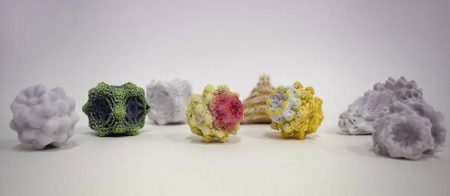Pollinators & Pollination 13/06/2019 – Posted in: Daily News – Tags: flowers, pollination
POLLINATORS & POLLINATION
For: Preliminary
Topic covers: Pollinators – their role, Flowers & Pollination,
News Flash
Researchers from the National Centre for Biological Sciences (NCBS), had co-published an international study on why pollinators prefer some flowers over others.
- Recent studies have pointed to an alarming decline in insect population.
The scientists have teamed up with the Thomas Pausz Studio in an ‘art-as-science’ project with the aim of utilising art and design knowledge for scientific research.
This, will help them develop better ways to attract dwindling pollinator populations to crops and other plants.
Their work is currently on display at the Victoria and Albert Museum (V&A) in London, one of the world’s largest museums of applied and decorative art.
Study
Researchers studied hoverflies because they are highly prolific pollinators found on every continent except Antarctica.
They replicated cues from flowers that were attractive in each environment — colour, shape, size, odour, etc — in the form of artificial flower lures that they tested in each location.
Findings
- The team found that some lures were attractive to hoverflies only in certain environments, but there was one flower lure that was attractive everywhere.
- This was exciting as it suggested the possibility of a ‘universal’ lure that is attractive regardless of environment and climate.
- The problem here was that the researchers didn’t know which of the cues were important – colour, odour, shape, or more than one.
‘Formless’ flower
- The researchers with the help of designers & artisits, design a “formless” flower, with use of paper, films, UV lights etc.
- The result of the exercise is a series of six ‘non-flower’ artefacts on show at the V&A alongside the Virtual Reality films based on fractal geometries.
- The actual artefacts were realised using a 3D printing machine.
Pollinators
A pollinator is an animal that causes plants to make fruit or seeds. They do this by moving pollen from one part of the flower of a plant to another part. This pollen then fertilizes the plant. Only fertilized plants can make fruit and/or seeds, and without them, the plants cannot reproduce.
Animals like bees, hummingbirds and some kinds of butterflies are the best pollinators.
Some kinds of plants, such as soybeans do not require pollinators at all, and some can be pollinated by wind in the ecodome blowing on the plants.
Pollination
- Pollination is the act of transferring pollen grains from the male anther of a flower to the female stigma.
- Through this it create offspring for the next generation.
- Pollination is mutually beneficial to plants and to pollinators.
- Pollination results in the production of seeds and is necessary for many plants to reproduce. Meanwhile, pollinators receive nectar and/or pollen rewards from the flowers that they visit. Sugary nectar provides pollinators with carbohydrates while pollen offers proteins, fats, vitamins, minerals, and necessary phytochemicals.
Source: The Hindu
You can follow us on LinkedIn and for more updates related to UPSC IAS Preparation, Like our Facebook Page and subscribe our Diligent IAS Youtube Channel

